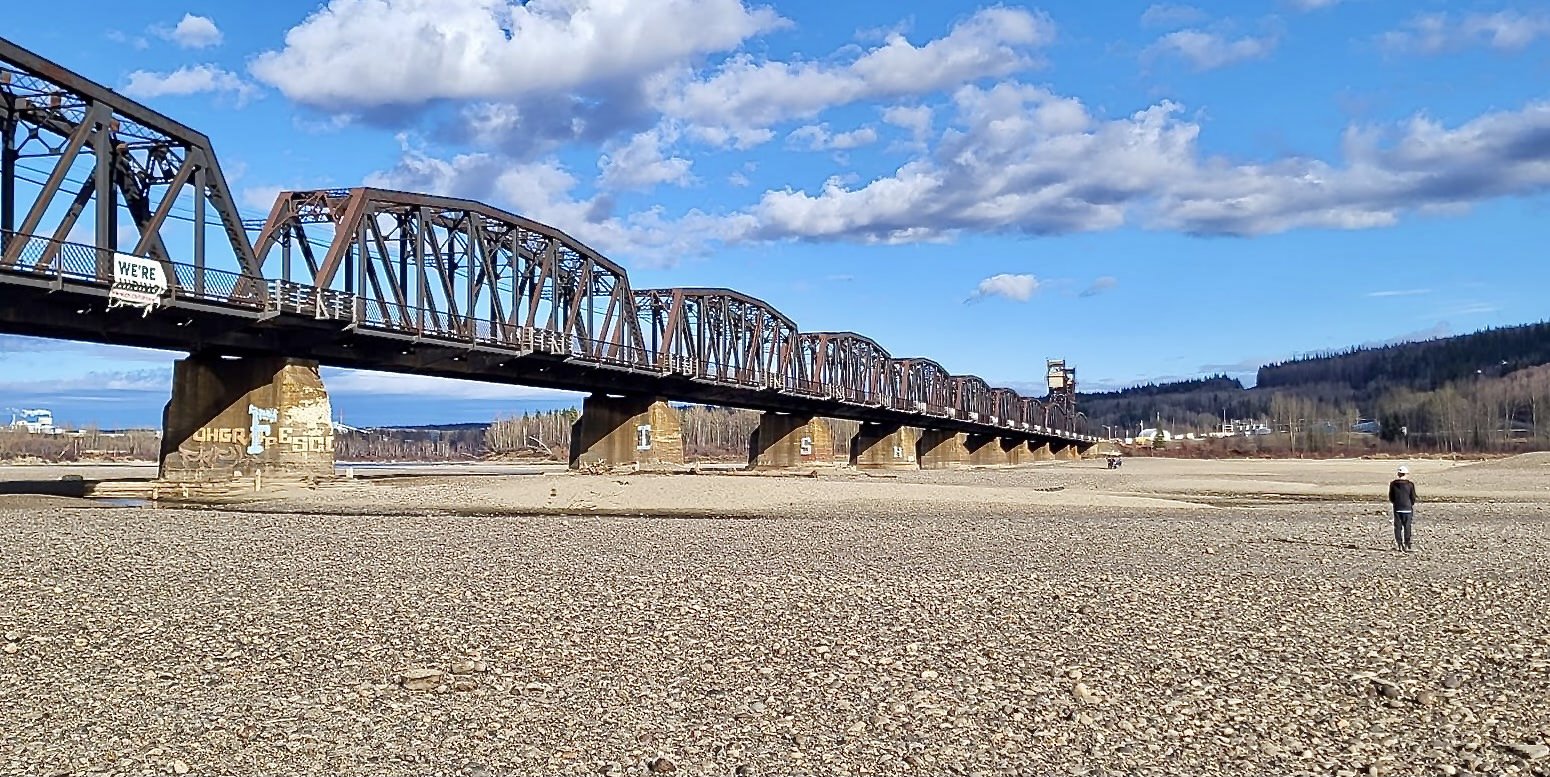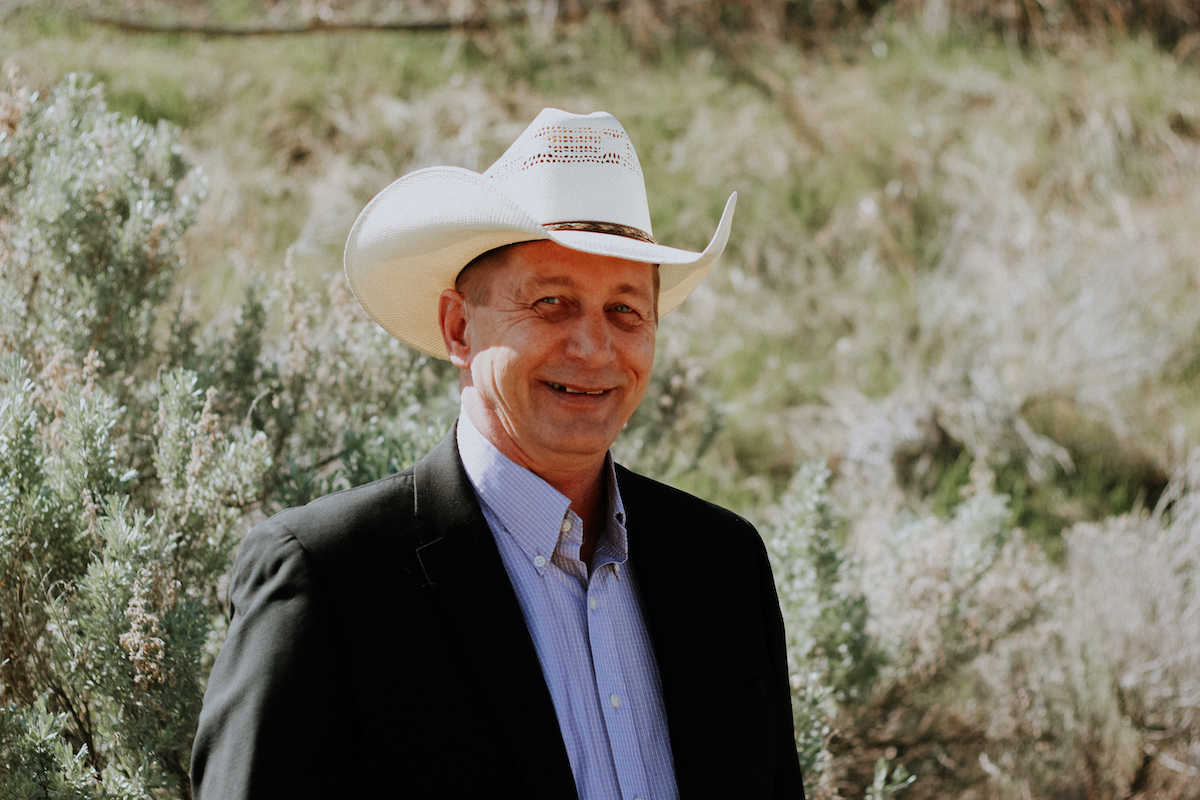A strikingly low snowpack in British Columbia is spurring the province and farmers into early action to hedge their bets as another summer of severe drought looms.
Provincial snow levels are sitting at 63 per cent of normal for April. The latest data shows an all-time low for more than five decades — since records were first kept.
A staggering 95 per cent of B.C.’s agricultural land is experiencing moderate to exceptional drought conditions.
There’s been no reprieve for ranchers and farmers in areas still racked by last summer’s extreme drought, says retired rancher Kevin Boon. A section of the Fraser River near Prince George is bone dry though water levels should typically be on the rise due to the spring melt. In the southern Interior, it’s much the same.
“I live just off the South Thompson [River] here and I’ve never seen it so low. I don’t think there’s much of the river that you can’t walk across right now,” said Boon, also general manager of the BC Cattlemen's Association.
The snowpack is low across B.C., except in the northwest. Areas of extra concern include Vancouver Island, the Upper East Fraser, Quesnel, Chilcotin, the central and south coast, and the Skeena-Nass basins, all of which have snow levels below 60 per cent of the historical norm.
Swaths of B.C.’s central Interior and northeast region are headed into summer with a significant “water deficit,” Boon said.
“It’s going to be a challenging, challenging year.”

Many sections of the Upper Fraser River, like the intersection with the Nechako River near Prince George, are bone dry this spring with little rain and an extremely low snowpack across B.C. Photo by Ben Fougere
Last summer, the province endured a firestorm of criticism from farmers and watershed groups for failing to act until the height of the drought. Hundreds of agricultural water users in the driest areas got little warning about restrictions that forced them to turn off the taps.
It seems the province took notes, Boon observed.
“They’ve learned over the past two or three years that we’ve got to do more upfront to help and make sure people know what resources are available,” he said.
Mark Raymond, executive director of the Ministry of Agriculture's extension and support services branch, said the province is working with agricultural associations to talk to farmers early and often in the driest areas well in advance of any potential water restrictions.
The Ministry of Agriculture and the Ministry of Water, Land and Resource Stewardship (WLRS) conducted upwards of 30 drought and water management workshops in communities across the province this spring. The goal is better communication to prepare for drought and outline financial supports, programs and water management resources for farmers, Raymond said.
At workshops, the process and rationale for imposing water restrictions are explained. But the focus is to discuss voluntary water conservation and tactics like on-farm or collective water storage solutions, rainwater capture and improving irrigation practices to prevent or delay the need for regulatory measures, he said.
The province also dramatically increased funding to help producers with the cost of improving water storage or irrigation systems, Raymond said.
An extra $80 million was allocated in B.C.’s recent budget for the Agriculture Water Infrastructure Program, designed to help farmers, industry, communities and groups with costs to manage, collect and store water for crops and livestock.
The program, originally launched in 2023 with $20 million over three years, resulted in more than 100 projects to capture water or install efficient watering systems, according to the province.
The sizable financial boost for urgently needed water infrastructure is a “bonus” and an encouraging step, said Boon.
Farmers are still hoping spring rains arrive in May and June and the weather stays cool enough to draw out the snowmelt, he said.
“We’re behind the eight ball already. So, now it’s a matter of doing what we can to prepare,” Boon said.
Farmers and ranchers growing water-intensive forage crops like alfalfa, hay, grass and corn were hardest hit by restrictions last summer, he said. It sparked concerns about the ability to feed livestock and prompted many to sell their animals.
How many animals were sold, what the overall demand for feed will be and the impacts to the industry are still being sorted out, Boon said.
Farmers typically reserve a portion of their forage crops for livestock throughout the year, but those supplies have dried up and shortages across Western Canada are increasing the cost and difficulty to secure feed, Boon said.
The cattlemen's association and the province launched an Access to Feed program in response to the unprecedented wildfire and drought last summer, working to match farmers needing feed with those able to sell it. The program will likely be revived this year, Boon said.
The initiative, along with the AgriStability and AgriRecovery programs co-funded by the province and federal government, will assist farmers who sign up by the end of April to help cover losses and extraordinary expenses due to climate disasters, he added.
Workshops and research projects will continue in different areas to examine drought-resilient crop varieties as one of a number of strategies farmers can use to handle water shortages, Raymond said.
Last year, nearly 400 water licence holders in the Thompson Okanagan region, particularly farmers growing water-intensive forage crops, were hit with water restrictions along the lower Salmon River north of Prince George and along Bessette Creek near Vernon.
Industrial users and feed crop farmers in the Tsolum, Koksilah and Cowichan river watersheds on Vancouver Island also were ordered to stop watering to protect threatened and dying fish stocks.
Comox Valley farmers at a recent workshop for the overtaxed Tsolum Watershed voiced frustration at being denied water to protect fish health, noting the province hasn’t done anything to curb clear-cutting by the logging industry, the biggest land user in the region.
Crops and livelihoods are increasingly at threat, while upstream clear-cuts impair groundwater absorption, accelerate snowmelt and drive high temperatures and low water levels in fish streams, said one farmer to applause from the audience.
Others suggested the focus of the workshops should not be to simply explain restrictions, but work to co-ordinate long-term water solutions. Rather than relying on piecemeal strategies for on-farm water storage systems, drought is best solved by large-scale regional water infrastructure like dams on lakes or rainwater reservoirs, they stressed.
Boon agreed it’s urgent that provincial drought workshops begin to rapidly drive regional or collective infrastructure to guarantee water for food producers as drought continues to advance in the coming years.
“Unless we’ve got the water trapped on the ground, we have no way of managing what comes out of the sky.”
Rochelle Baker / Local Journalism Initiative / Canada's National Observer






Comments